 W
WA memorial is an object which serves as a focus for the memory or the commemoration of something, usually an influential, deceased person or a historical, tragic event. Popular forms of memorials include landmark objects or works of art such as sculptures, statues or fountains and parks.
 W
WA monument is a type of structure that was explicitly created to commemorate a person or event, or which has become relevant to a social group as a part of their remembrance of historic times or cultural heritage, due to its artistic, historical, political, technical or architectural importance. Some of the first monuments were dolmens or menhirs, megalithic constructions built for religious or funerary purposes. Examples of monuments include statues, (war) memorials, historical buildings, archaeological sites, and cultural assets. If there is a public interest in its preservation, a monument can for example be listed as a UNESCO World Heritage Site.
 W
WThe Punjab Government built Anglo Sikh war memorial at Ferozeshah, Ferozepur at Moga Road. The memorial was built to honor the soldiers who died fighting against British army at Chillianwala on 13 January 1849; Sabhraon on 10 February 1846; Mudki on 18 December 1845; and Ferozeshah on 21–22 December 1845.
 W
WThe Berkeley Memorial stands in the centre of the Circus in Basseterre, Saint Kitts and Nevis. The memorial features a drinking fountain as well as a clock. There are four clock faces, each one facing one of the four streets leading to the Circus. It was built in honour of Thomas Berkeley Hardtman Berkeley, a former president of the General Legislative Council in the 1880s.
 W
WA chronogram is a sentence or inscription in which specific letters, interpreted as numerals, stand for a particular date when rearranged. The word, meaning "time writing", derives from the Greek words chronos and gramma.
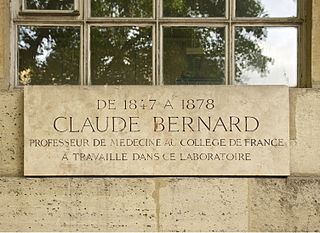 W
WA commemorative plaque, or simply plaque, or in other places referred to as a historical marker or historic plaque, is a plate of metal, ceramic, stone, wood, or other material, typically attached to a wall, stone, or other vertical surface, and bearing text or an image in relief, or both, to commemorate one or more persons, an event, a former use of the place, or some other thing. Many modern plaques and markers are used to associate the location where the plaque or marker is installed with the person, event, or item commemorated as a place worthy of visit. A monumental plaque or tablet commemorating a deceased person or persons, can be a simple form of church monument. Most modern plaques affixed in this way are commemorative of something, but this is not always the case, and there are purely religious plaques, or those signifying ownership or affiliation of some sort. A plaquette is a small plaque, but in English, unlike many European languages, the term is not typically used for outdoor plaques fixed to walls.
 W
WThe Empty Library (1995), also known as Bibliothek or simply Library, is a memorial in memory of the burning of books by Israeli sculptor Micha Ullman dedicated to the remembrance of the Nazi book burning that took place in the Bebelplatz in Berlin, Germany on May 10, 1933. The memorial is set into the cobblestones of the plaza and contains a collection of empty subterranean bookcases.
 W
WThe Epitaph of Altamura is a monument located in Altamura, Southern Italy, erected right after the visit in city, on 8 April 1807, of Joseph Bonaparte, who had just become king of Naples. The commemorative epitaph is located in largo Epitaffio. Although traditionally named epitaph, it is not a funerary inscription but a commemorative monument.
 W
WThe Equestrian statue of Charlemagne (1725), which portrays the Holy Roman Emperor Charlemagne (742–814), was commissioned by Pope Clement XI (1649–1721) and carved by the Italian artist Agostino Cornacchini (1686–1754). It stands to the left of the portico of St Peter's Basilica.
 W
WThe Evolution of Textile Monument, is a monument located in the center of the city of Ksar Hellal (Tunisia). The monument is a symbol of the development of the textile industry in Ksar Hellal, the city is dubbed the textile capital of Tunisia.
 W
WFallen Astronaut is a 3.5-inch (8.9 cm) aluminum sculpture created by Paul Van Hoeydonck. It is a small stylized figure, meant to depict an astronaut in a spacesuit, intended to commemorate the astronauts and cosmonauts who have died in the advancement of space exploration. It was commissioned and placed on the Moon by the crew of Apollo 15 at Hadley Rille on August 1, 1971, next to a plaque listing the 14 men known who died. The statue lies horizontal on the ground among several footprints.
 W
WFar East prisoners of war is a term used in the United Kingdom to describe former British and Commonwealth prisoners of war held in the Far East during the Second World War. The term is also used as the initialism FEPOW, or as the abbreviation Far East POWs.
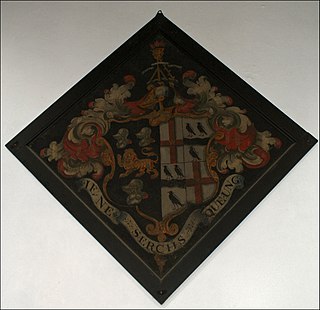 W
WA funerary hatchment is a depiction within a black lozenge-shaped frame, generally on a black (sable) background, of a deceased's heraldic achievement, that is to say the escutcheon showing the arms, together with the crest and supporters of his family or person. Regimental Colours and other military or naval emblems are sometimes placed behind the arms of military or naval officers. Such funerary hatchments, generally therefore restricted in use to members of the nobility or armigerous gentry, used to be hung on the wall of a deceased person's house, and were later transferred to the parish church, often within the family chapel therein which appertained to the manor house, the family occupying which, generally being lord of the manor, generally held the advowson of the church. In Germany, the approximate equivalent is a Totenschild, literally "shield of the dead".
 W
WThe Goethals Monument in Panama City, Panama was constructed in honor of George Washington Goethals the chief engineer of the Panama Canal and United States Army General. He also was the State Engineer of New Jersey and the Acting Quartermaster General of the United States Army in WWI.
 W
WThe Guadalcanal American Memorial is a World War II monument on Guadalcanal in Solomon Islands. Dedicated on August 7, 1992, it was established as a tribute to the Americans and their allies who lost their lives during the Guadalcanal Campaign from 7 August 1942 to 9 February 1943. The capital city of Honiara is to its north. To mark the 50th anniversary of the Red Beach landings, the U.S. War Memorial was dedicated on 7 August 1992. An account of this is also inscribed on red marble tablets inside the monument compound. The memorial was a joint effort of the American Battle Monuments Commission (ABMC) and the Guadalcanal-Solomon Islands Memorial Commission, and was at the initiative of Robert F Reynolds, Chief of Valors Tours Ltd. The memorial is maintained by the ABMC. Every year on 7 August, a commemorative ceremony is held to mark the first day of the battle. Another monument, erected by the Japanese on Mount Austen, is a tribute to the Japanese who lost their lives.
 W
WAn in memoriam segment is a memorial to the people, of one particular field or industry, who have recently died. Typically, such memorials air on television, mostly during awards ceremonies. These segments consist of images or video clips of the recently departed individuals, edited together into a montage and usually accompanied by music. These memorials have been featured in such places as the Oscars, the Emmys, the Grammys, the Tonys, the Olivier Awards, the SAG Awards, and even the NFL during Super Bowl week.
 W
WJohn Jacob “Rifle Jack” Peterson was a Revolutionary war era patriot of African and Kitchewan descent whose quick thinking helped repel British forces in Croton, New York. His actions threw Benedict Arnold’s treasonous plans into disarray and led to the capture of Major Andre. This heroism inspired the erection of a memorial plaque at Teller's Point, now Croton Point, in Croton New York. The plaque also commemorates the actions of George Sherwood but the marker has been more popularly known as the Jack Peterson Memorial.
 W
WJanuary 20 is a monument complex located in the city of Baku, Azerbaijan. İt was built in memory of the victims of January 20, 1990. The monument was erected on the territory of the Yasamal district, near the "January 20" ring road.
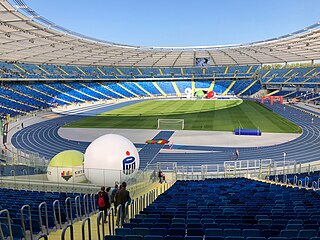 W
WThe Kamila Skolimowska Memorial is an annual track and field meeting held at the Silesian Stadium in Chorzów, Poland in July, organized by the Kamila Skolimowska Foundation.
 W
WThe Latin American and Caribbean Network of Sites of Memory is an organization whose mission is to promote democracy and the observance of human rights in Latin America and the Caribbean through the recovery, construction and dissemination of collective memories about serious human rights violations and resistance, to achieve truth, justice, reparation and non-repetition measures. The network brings together 44 institutions from 12 countries. Globally, it is one of the seven regional networks that make up the International Coalition of Sites of Conscience, which has more than 275 members in 65 countries
 W
WThe Leone Healing Garden is a garden memorial in Leone dedicated to those who lost their lives in the 2009 tsunami. The Healing Garden is meant to allow families of the victims of the tsunami to have a place "where they can grieve and celebrate life at the same time". The first chair of the garden was Ipu Avegalio Lefiti and the project manager is Makerita Enesi. The garden contains plants, a sculpture made by Patrick Mafo'e, and plaques with the names of the 11 people who died in the tsunami.
 W
WLewis Bay is a bay indenting the north coast of Ross Island, Antarctica, between Mount Bird and Cape Tennyson.
 W
WLindley is a small town situated on the banks of the Vals River in the eastern region of the Free State province of South Africa. It was named after an American missionary, Daniel Lindley, who was the first ordained minister to the Voortrekkers in Natal.
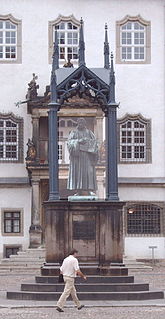 W
WA Luther Monument (Lutherdenkmal) is a monument dedicated to the reformer Martin Luther. The oldest one from 1821 is in Wittenberg. The largest one, the Luther Monument in Worms, was unveiled in 1868 as a composition of several statues, designed by Ernst Rietschel. Several monuments in the United States use a copy of Rietschel's main statue, including the Luther Monument in Washington, D.C., from 1884.
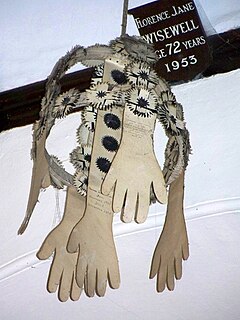 W
WA maiden's garland, also known as a virgin's crown, crants or crantsey, is a crown-shaped garland used as a funeral memento for, usually female, virgins. They are generally made of paper flowers, rosettes and ribbons fixed to a wooden frame. Many are also adorned with white paper gloves, and may be inscribed with verses of poetry and the name of the deceased. The garlands are carried before, or on, the coffin during the funeral procession and afterwards displayed in the church. W. R. Bullen, writing in The Tablet in 1926, reports that the "practice of carrying garlands at a maiden's funeral was common in England, Wales and Scotland before the Reformation and after it for two hundred years or more, but the custom has now almost entirely fallen into disuse." Shakespeare refers to the custom in his play Hamlet, when describing the burial of Ophelia: her death was doubtful, and, but that great command o'ersways the order, she should in ground unsanctified have lodged till the last trumpet; for charitable prayers, shards, flints and pebbles should be thrown on her; yet here she is allow'd her virgin crants, her maiden strewments, and the bringing home of bell and burial.
 W
WThe Megalithic Walls of Altamura are defensive walls dating back to the 4th century BCE. They were the city walls of the ancient city of Altamura, Italy. Nowadays, only a few parts of the original wall remain; the original track of the wall spanned over a length of about 3.6 km. They were about 4 meters high, while the base of the walls was about 5 meters wide.
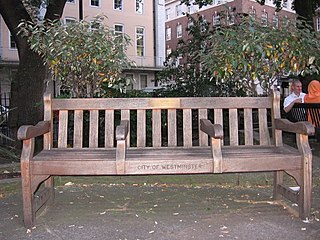 W
WA memorial bench or memorial seat is a piece of furniture which commemorates a person who has died. Memorial benches are typically made of wood, but can also be made of metal, stone, or synthetic materials. Typically memorial benches are placed in public places but are often also placed in domestic gardens.
 W
WA memorial cross is a cross-shaped memorial to commemorate a special event or an incident, typically where one or more people died. It may also be a simple form of headstone to commemorate the dead.
 W
WA memorial hall is a hall built to commemorate an individual or group; most commonly those who have died in war. Most are intended for public use and are sometimes described as utilitarian memorials.
 W
WMeyazia 27 Square is an important and historic intersection and surrounding neighborhood in Addis Ababa, located where Adwa St, King George VI St, Queen Elizabeth II St, and Development Through Cooperation Ave come together. Its name denotes 27 Miyazya, 5 May, both the day when Addis Ababa fell to Italy in 1936 and was liberated in 1941. The park is under the aegis of the Addis Ababa Land Development and Urban Renewal Agency.
 W
WMonument to Those Who Saved the World is a monument in Chernobyl, Ukraine, to the firefighters that died putting out the fire at the Chernobyl Nuclear Power Plant in 1986 after the catastrophic nuclear accident there. The monument is also dedicated to the Chernobyl liquidators that cleaned up after the accident.
 W
WThe National Monument of the Kasbah, more simply called the National Monument, is a memorial monument and a prominent symbol of several events in Tunisia. It is located in the center of the Kasbah Square in Tunis, facing the Town Hall.
 W
WSoldiers’ and Sailors’ Monument (1887) is a monument in Arlington, MA, dedicated to the men of who served in the Civil War. The victory column in Arlington is located at the junction of Massachusetts Avenue and Broadway. 42 feet tall, it is made from three different types of granite from Barre, Vermont; Quincy, Massachusetts; and Westerly, Rhode Island. It was constructed by the Mitchell Granite Company of Quincy and dedicated on June 17, 1887.
 W
WThe Teen Talwar monument is located in Clifton, Karachi, Sindh, Pakistan. The three marble swords are inscribed with Quaid-e-Azam Mohammad Ali Jinnah's creeds Unity, Faith and Discipline. It was commissioned by Pakistan's former President and Prime Minister, Zulfikar Ali Bhutto in 1973, and was designed by Zoroastrian architect Minu Mistri.